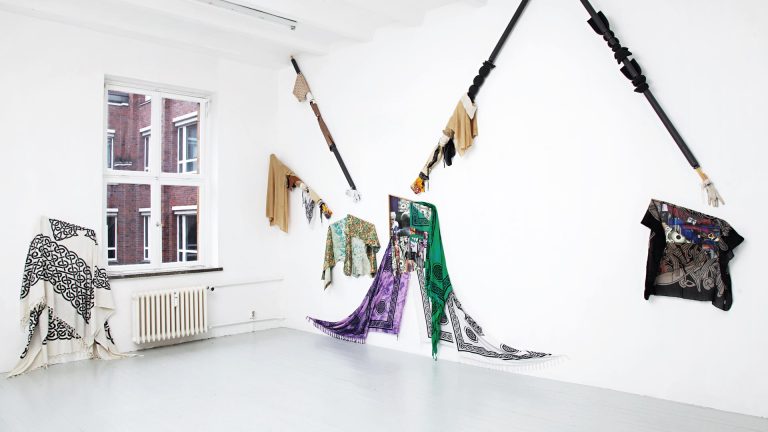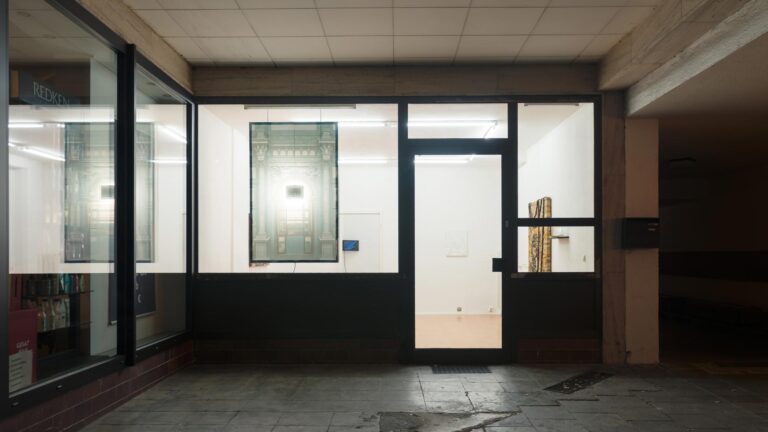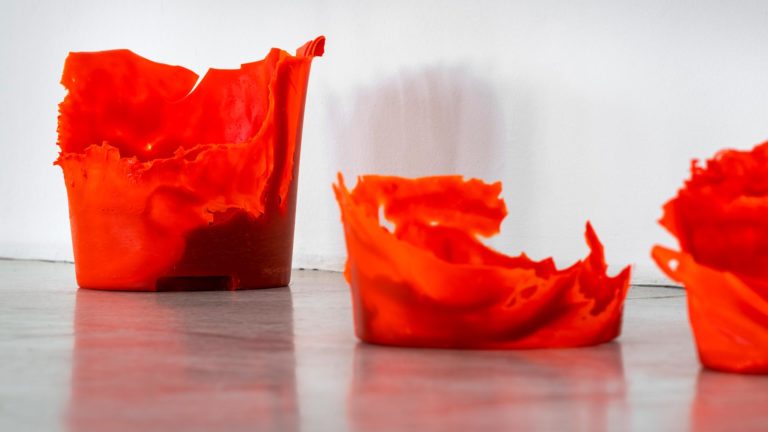Artists: Tristan Wilczek
Venue: Markus Lüttgen, Düsseldorf, Germany
Date: September 3 – October 30, 2021
Photography: all images copyright and courtesy of the artists and Markus Lüttgen, Düsseldorf
As part of DC Open 2021, Markus Lüttgen is delighted to announce Tristan Wilczek’s third solo exhibition.
Conceiving of the image as an apparatus of experience and cognition, through which even structures that would otherwise unthematically precede the idea of the image are interrogated, is one way of framing a basic premise of Tristan Wilczek’s artistic philosophy. In his most recent works, the considerations associated with this appear programmatically condensed in the concept of “spatial grammar.” The exhibition thus becomes a systematic investigation of a composite that draws its reflexive potential from the tense relationship between what is addressed as open possibility on the one hand and strict regularity on the other.
For in Wilczek’s works, “space” is not an a priori form of intuition, nor is it simply the largely attractive visual space of the canvas, decorated using all kinds of techniques and materials. Instead, as the subject of analytical observation, “space” itself becomes an open question here, something that—in the specificity of the medium of painting, and in a reflection of this, too—must always be produced first. In doing so, the arsenal of diagrams and technical drawings that Wilczek has been using for several years is clearly recognizable as a theoretical reference, even in the most recent works. However, the compositions have become more reduced, more severe; instead of solely drawing the way they function from a pool of technical images, they also invoke the tradition of a constructivist approach to space, without ever having to present themselves as emphatically “artistic.”
Instead, through this juxtaposition of differing paradigmatic approaches to space, the question of their actual scope is incisively addressed. In Ohne Titel (da, frei gestellt) (Untitled (there, set free)), for example, a structure of rectangles that initially seems quite basic forms the framework for the spatial reference already indicated in the title. But what does “there” mean here? Is it the imperative of a rather forward directional gesture, which consolidates the constructive element in the designation of a specific place? Or is this supposedly unambiguously designated place within a diagrammatic arrangement in fact mobilized into a placeless something that is thrust across the canvas again and again? At the same time, this “there” is set free (from this framing, this function …), placed on the passepartout of a gray geometric surface, thus de- and recontextualized in its spatial references in order to transcend the regularity of one spatial grammar, which ostensibly guarantees its proper functioning in the other.
Evaluating painting for its grammar consequently means making the image a practice, something temporary, provisional, even fragile, in which its elements and contexts are only ever temporarily stabilized in the implementation of the very rules that form its reference system. In such a concept of the image, the calculated subversion of rules acquires a special epistemological status. With it, the question of the limits of what can be formulated and represented within such a reference system becomes a systematic one. Meanwhile, the strategies Wilczek deploys to explore these limits are quite varied. From processes of displacement and deviation, with which the organization of the image is forcefully brought to mind as the expression of mandatory but nonetheless conventional directions, to the defiant overpainting of individual logical operators drawn in pencil, as if the previously formulated rules needed to be deliberately corrupted in places, and to the adaptation of a completely new reference system, as in Ohne Titel, Akt in 4 Szenen (Im Abspann Nachtstück) (Untitled, Act in 4 Scenes (In the Nocturne Credits), a reference system in which the canvas suddenly becomes a stage that also has a resolutely temporal structure.
In this panorama of targeted disorientation, the grammatical is no longer presented as a category of strict regularity, but is depicted in its potentiality. Wittgenstein noted in his Philosophical Investigations that “our investigation is therefore a grammatical one,” because it is not directed toward an ontologically clearly defined realm of phenomena, but “toward the ‘possibilities’ of phenomena.” It is this potential of the grammatical that Wilczek’s images render tangible.
-Sebastian Hammerschmidt


















